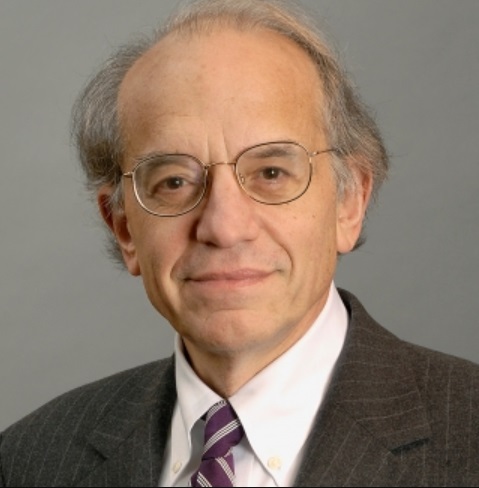Don’t fear the Fed’s 25-basis-point rate hike on Wednesday, according to Jeremy Siegel. Given the strength of the economy and low unemployment, he said stocks can withstand higher rates.
Siegel is the Russell E. Palmer Emeritus Professor of Finance at the Wharton School of the University of Pennsylvania and a senior economist for WisdomTree. He spoke yesterday via a webinar hosted by WisdomTree.
Over the last few weeks, the forward-looking data, including the money supply, commodity prices and home prices have all been increasing, he said, as have other metrics.
“That means the economy can withstand higher rates than I had thought,” he said.
This is good for stocks – especially value stocks – which tend to be more cyclical.
Earnings have been great, he said, as have been forecasted profits. Warnings of earnings misses have been infrequent, despite the yield curve still being inverted.
Value stocks are much more attractive than bonds. Value stocks trade at a P/E ratio of 17, which he said is the equivalent of a 6% real return (the reciprocal of the P/E ratio). But bonds (based on TIPS rates) have only a 1.6% real yield.
“I’d rather be a stock owner than a bond holder almost all the time,” he said, “especially now.”
Siegel credited Jerome Powell for giving one of his best news conferences. Powell stressed data dependence and focused on balanced risks – such as inflation versus the labor market – much more so than he had previously. He also talked about the latent effects of monetary policy and de-emphasized the effect of wages on prices.
Strong growth surprised everyone, including the Fed. Siegel said he had previously thought that higher rates would slow the economy in the third quarter, but now said that will not happen.
We could see “higher for longer,” he said, and could see a higher terminal rate. Real rates will be higher because real growth will be greater. TIPS may eventually go from 1% to 1.25%, and the target Fed funds rate will be 2.5% to 3%. The yield curve will de-invert and be normal, but rates will be higher.
We want a steeper, un-inverted yield curve, he said, because that is good for economic growth and for risk assets.
The probability of a recession is less, which Siegel estimated to be 25%.
“The economy is strong because the Fed is in line with reality,” he said. It is positioned to react to weakness faster than earlier this year. For example, he said rates could be cut if unemployment spikes.
The Fed will be less dogmatic, according to Seigel, and more likely to lower rates if it sees weakness.
We are in the political season, and the Democrats know that a recession would be the worst thing that could happen to them. Powell will be sensitive to those dynamics, according to Siegel.
The inflation battle is over, and the dollar is falling, which is good for earnings and exports. But rising commodity and home prices could still ignite inflation.
Inflation lags monetary policy (based on the M2 money supply) by 18-24 months. In 2020, there was a record M2 increase, followed by a record decrease in 2022 that lasted until March of 2023. But M2 has turned up since then, he said. Money supply has stopped going down, he said, “which has hurt the dollar and commodity prices.”
The Fed is reducing its balance sheet by selling its mortgage-backed securities (MBS). It is also reducing its supply of Treasury securities, but at a slower rate than MBS.
Despite the Fed’s rate increases and the looming threat of a recession, Siegel said that it is remarkable that the 10-year yield is mostly unchanged this year.
With higher real rates, the Fed will wait to ease until key indicators (like unemployment) deteriorate.
Fiscal policy is neutral and will not slow growth or increase the risk of a recession, according to Siegel.
Siegel mentioned some risks to economic growth.
When there is a fiscal stimulus that sends money to those on “Main Street,” it can lead to inflation that erodes wealth and counteracts the intended policy goals. Siegel said that the extra spending provided to Americans during the pandemic will be gone by early fall. Higher mortgage rates will also eat into discretionary spending. The biggest market crashes come in September and October, when summer spending and tuition bills must be paid. There will be a resumption of student debt payments in the fall.
Robert Huebscher is the founder of Advisor Perspectives and a vice chairman of VettaFi.
This article was originally published on Advisor Perspectives on July 28, 2023.









